The Morning Mallorca Shows Its True Face
At 6:47am, standing on the limestone cliffs above Cala Varques, I watch the Mediterranean turn from gunmetal grey to molten copper. Below, a lone fisherman named Josep casts his line from rocks that have been worn smooth by a thousand years of waves. “Twenty years ago, I’d have this whole cove to myself until noon,” he tells me in Mallorquí-accented Spanish, reeling in a small llampuga (mahi-mahi). “Now by 9am in summer, there are 200 people here.”
This is Mallorca in 2025: an island wrestling with its own success. Last year, 18.7 million visitors descended on a place home to just 940,000 residents. The math is staggering – that’s 20 tourists for every local. And the locals? They’re not happy. The graffiti reading “Tourists Go Home” that appeared in Palma last spring has been painted over, but the sentiment remains, simmering beneath the surface of every forced smile in overcrowded restaurants.
The Real Mallorca: What Nobody Tells You
Let me be clear: Mallorca remains extraordinary. The Serra de Tramuntana still takes your breath away when morning mist clings to its 1,445-meter peaks. The turquoise water at Caló des Moro still looks like someone dissolved sapphires in the sea. But here’s what the glossy magazines won’t tell you: Playa de Palma now requires advance booking (€10-15 per person) during peak season. That “hidden” beach on Instagram? It had 400% more foot traffic last year, causing severe erosion. Those charming restaurants in Valldemossa? Many have been replaced by chains serving €18 paellas that would make a Valencian weep.
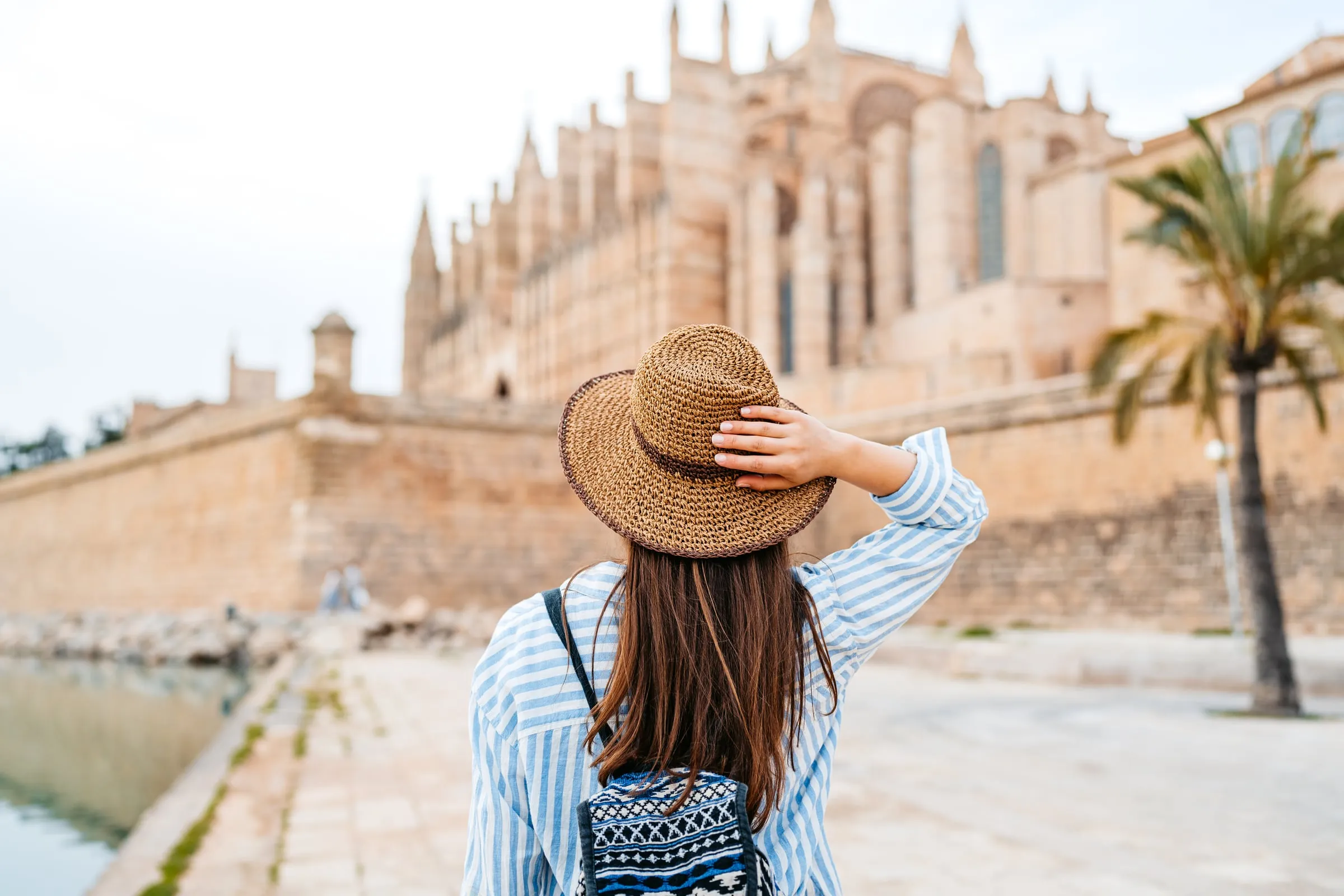
La Seu Cathedral rises above Palma’s waterfront, its Gothic spires reflected in the ancient city walls below – a view that costs nothing but takes your breath away.
Why I Still Love This Complicated Island
After 15 summers documenting Mallorca’s transformation, I should be cynical. Instead, I’m protective. Because when you know where to look – and more importantly, when – Mallorca still delivers moments of pure Mediterranean magic.
When to Visit: The Brutal Truth About Seasons
The New Reality of Peak Season
Forget everything you’ve read about “July and August are busy but manageable.” In 2024, Palma Airport processed 33 million passengers – a 7% increase from 2023. The MA-10 coastal road now experiences 2-hour traffic jams from the airport daily. Hotels that cost €120 in May jump to €450 in August.
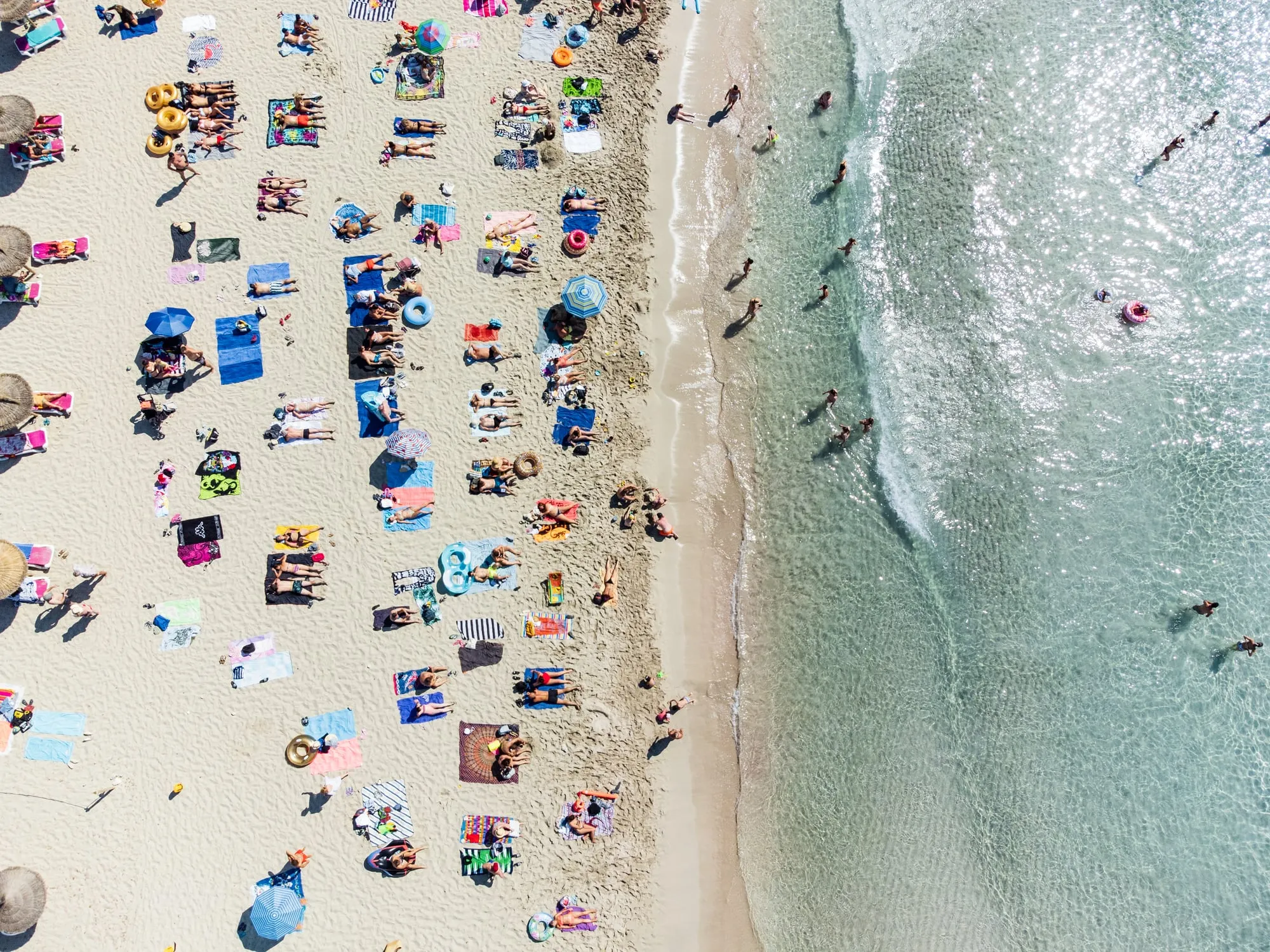
Playa de Muro on August 15th at 2pm: This is what 8,000 people on 1km of beach looks like. Those tiny dots? Each one paid €35 for their sunbed.
When to Visit
Jan
Quiet but cool
Feb
Almond blossoms begin
Mar
Perfect hiking weather
Apr
Easter crowds arrive
May
Ideal conditions
★ BestJun
Beach season starts
★ BestJul
Peak madness
Aug
Avoid if possible
Sep
Still warm, less crowded
★ BestOct
Second best month
★ BestNov
Peaceful but unpredictable
Dec
Christmas markets charm
Winter Mallorca: Storms and Solitude
Winter transforms Mallorca into what it was before mass tourism. The Tramuntana mountains disappear into clouds, waves crash over Palma’s Paseo Marítimo, and you can walk Es Trenc beach for hours without seeing another soul.
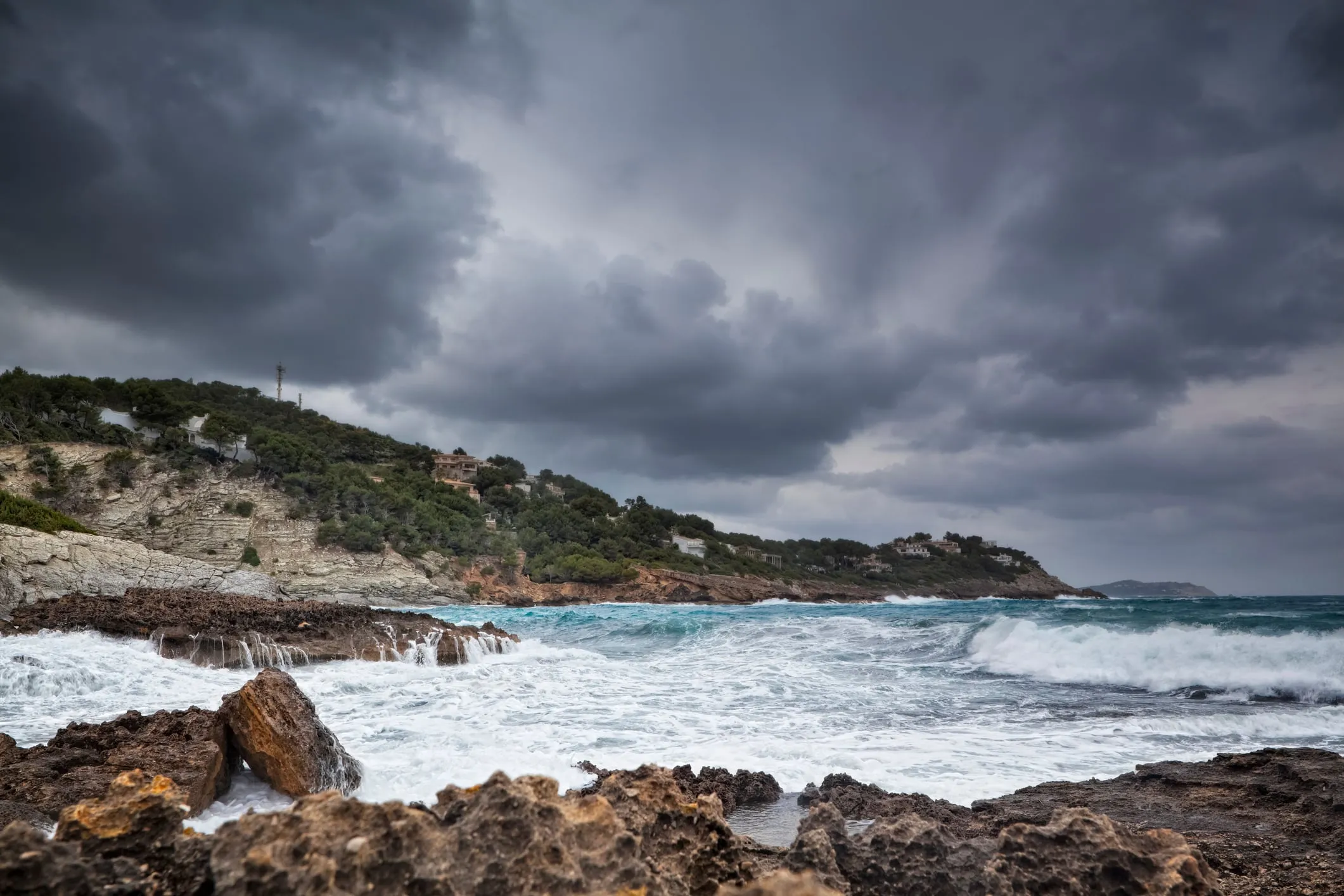
Winter storm on Palma’s Paseo Marítimo: When 8-meter waves remind everyone that the Mediterranean isn’t always placid. The locals love these days – the island feels like theirs again.
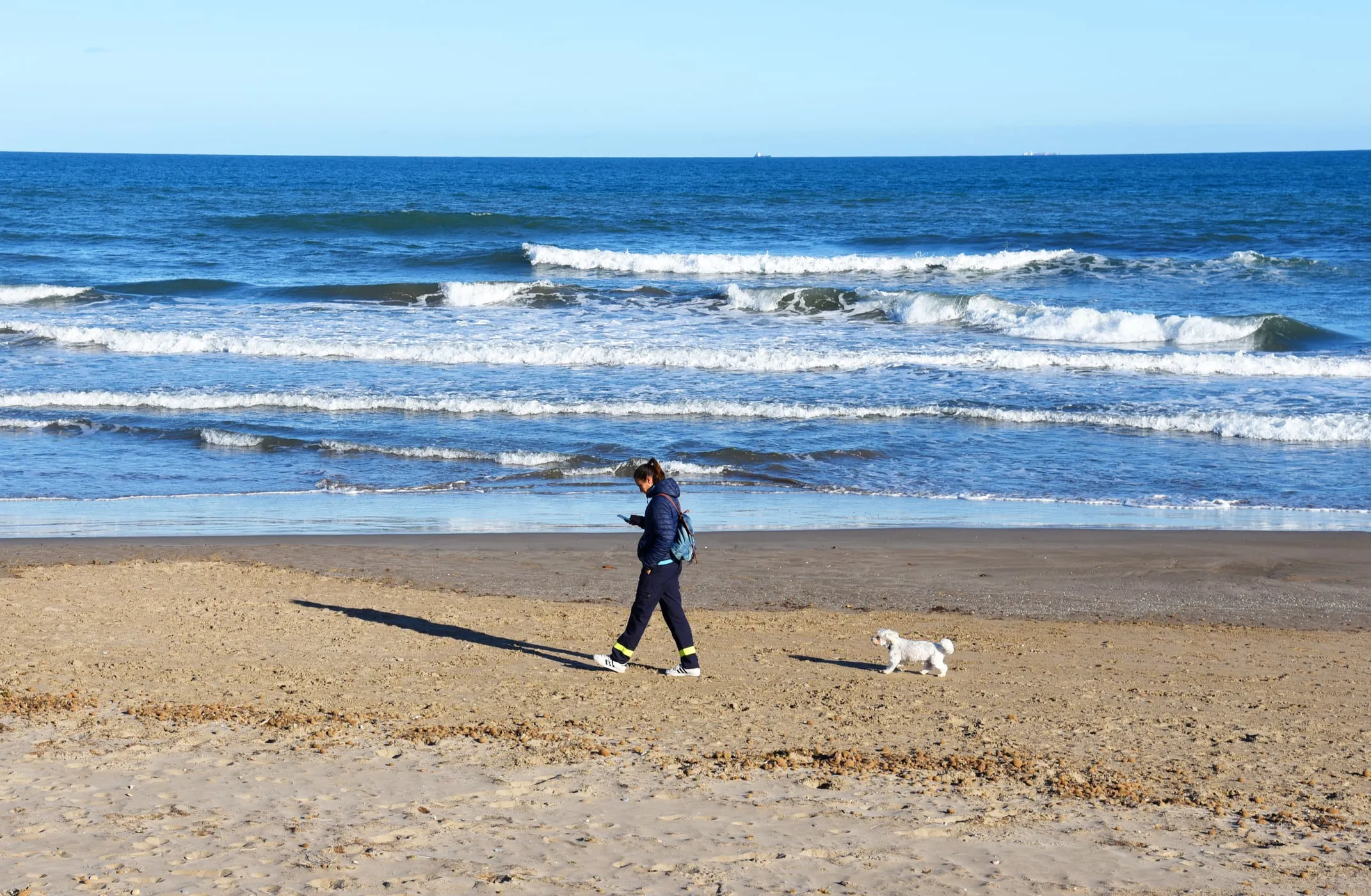
Es Trenc in January: The same beach that holds 3,000 people in August. Winter swimmers call it paradise – 15°C water, zero crowds, perfect peace.
Spring Magic: The Almond Blossom Window
For three weeks between late January and mid-February, five million almond trees explode into pink and white clouds across the island. The Tramuntana foothills become an impressionist painting, and every local with a camera becomes a photographer.
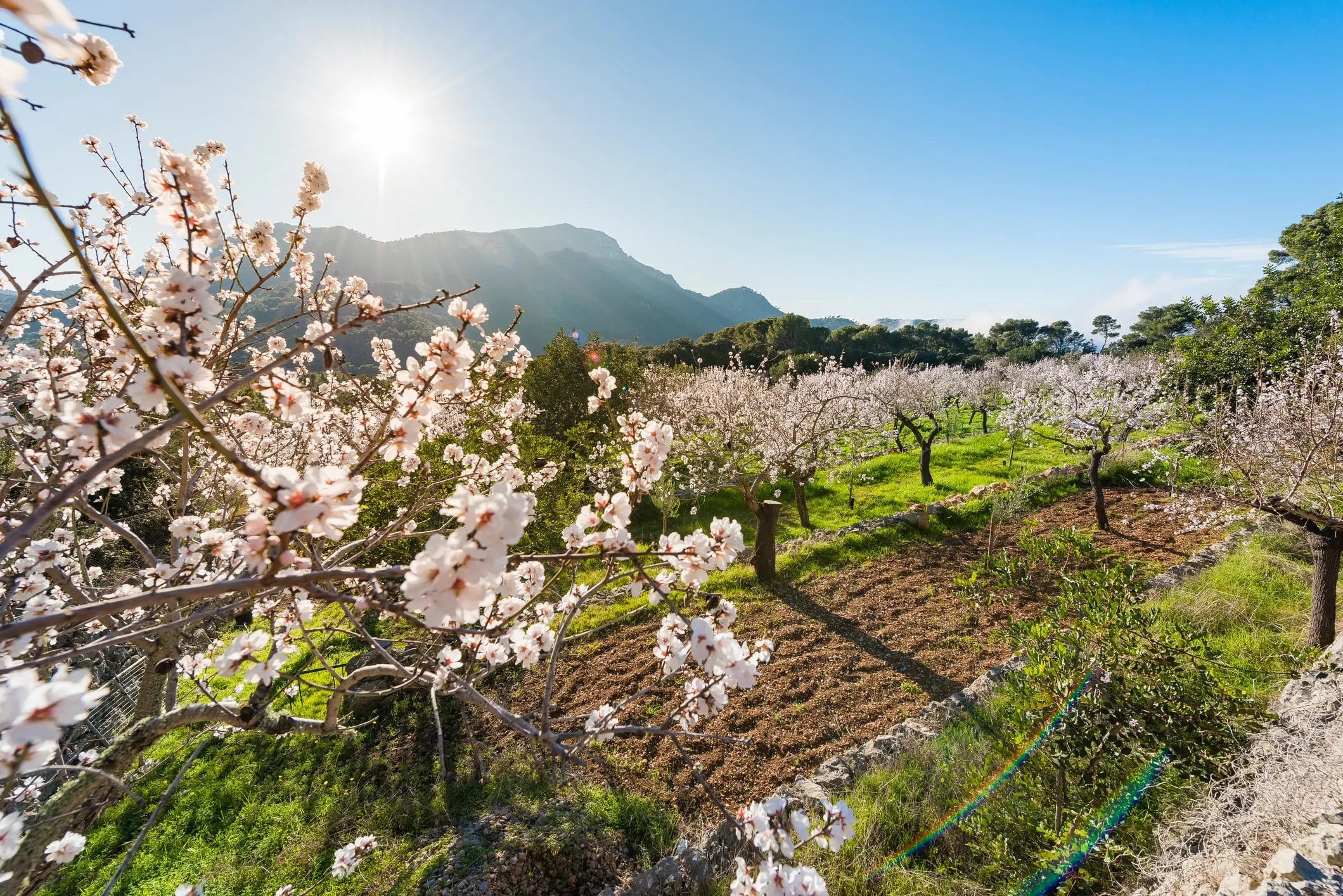
Almond blossoms near Selva in February: Five million trees bloom simultaneously for just three weeks. The Spanish call it ‘Mallorcan snow’ – and unlike the August crowds, it’s actually beautiful.
Getting Here: The Airport Gauntlet
The PMI Reality Check
Palma Airport (PMI) in summer 2025 is Dante’s fourth circle of hell. I’ve timed it: from plane door to rental car exit averages 2 hours 15 minutes in July. The baggage carousel takes 45 minutes minimum. The Goldcar queue snakes around three times.
Airport Transport Options
As of March 2025The Ferry Alternative Nobody Mentions
The overnight Trasmediterránea ferry from Barcelona arrives at 7am. You wake up sailing past Sa Dragonera island as the sun rises. It’s how islanders travel when they have time. Book the “Neptuno” cabin class – worth the extra €30 for a window.
Barcelona-Mallorca Ferry
As of March 2025Moving Around: The Car Debate
The Inconvenient Truth About Driving
Mallorca’s government wants to limit cars – desperately. By summer 2026, non-residents may be restricted to one vehicle per family. Rental car companies are already reducing fleets. But here’s the paradox: without a car, you’re stuck in resort hell.
The Train Everyone Photographs
The wooden Sóller train (€25 one-way, €33 return) is Instagram gold, yes. But here’s what they don’t tell you: it’s packed by 10am, takes 55 minutes for what’s a 25-minute drive, and the wooden seats weren’t designed for modern posteriors.
The Local Alternative: Take the 211 bus from Palma to Sóller (€2.40, 45 minutes), then spend your saved €30 on lunch at Ca’n Boqueta (Gran Via 43, Sóller) where Maria serves arròs brut (€14) that her grandmother’s recipe cards would approve of.
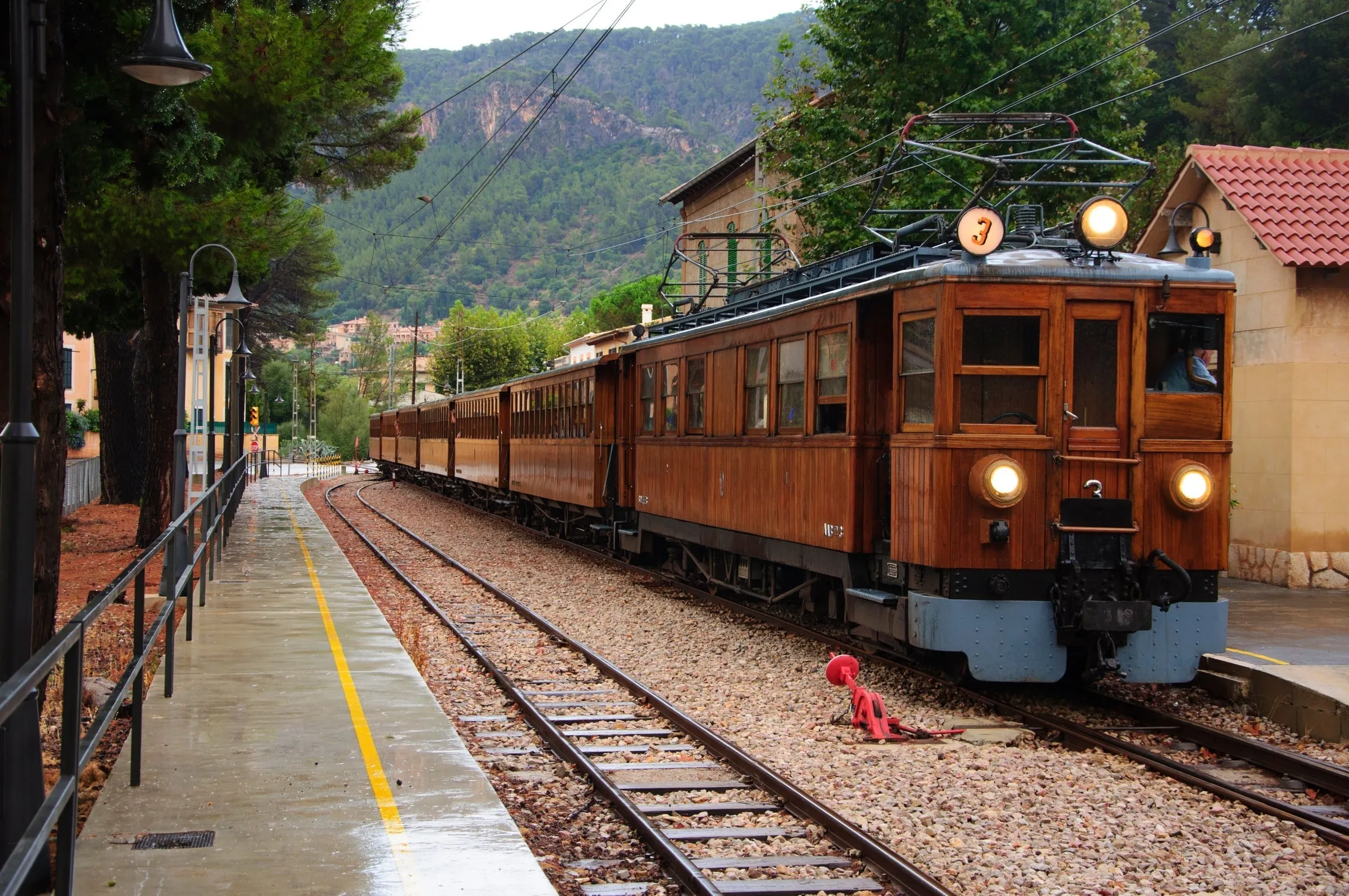
The historic Sóller train at the station: €33 for the full journey through orange groves and mountain tunnels. Locals take the bus for €2.40.
The Serra de Tramuntana: UNESCO’s Mountain Masterpiece
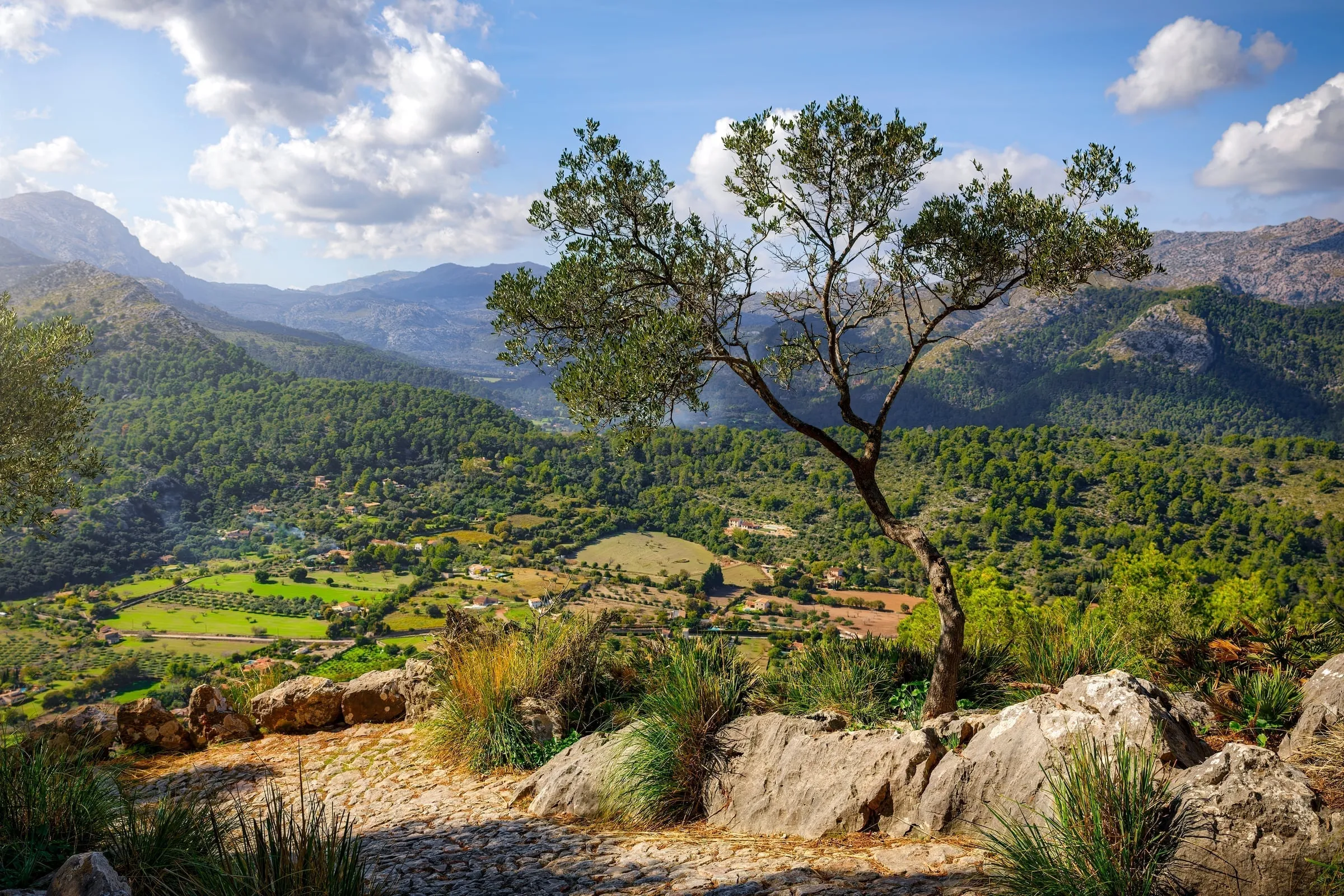
The Serra de Tramuntana: 90km of limestone peaks, ancient olive groves, and stone terraces that have shaped this landscape for 1,000 years.
Where to Stay: The Accommodation Crisis
The Harsh Reality of 2025 Bookings
With 72% of central Palma properties now tourist rentals, locals are being pushed to the outskirts. The government’s response? New regulations limiting tourist licenses. Translation: fewer legal rentals, higher prices, more under-the-table deals.
Palma Old Town
Gothic quarter with narrow streets, converted palaces and boutique hotels. Cathedral bells wake you at 7am, but you're stumbling distance from the best tapas bars.
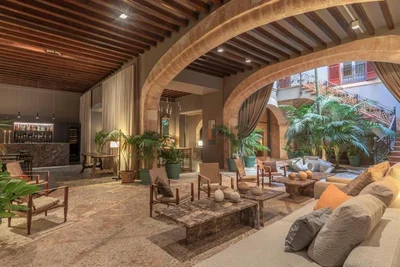 LUXURY
LUXURY Can Cera
Advantages
- Cathedral views
- Contemporary art
- 12 rooms only
Considerations
- Book 4 months ahead
- Very expensive
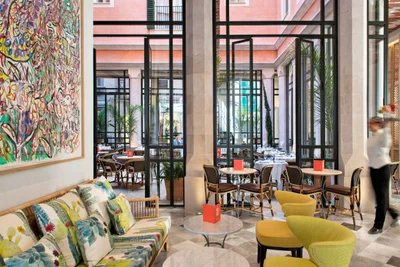 BOUTIQUE
BOUTIQUE Hotel Mamá
Advantages
- Late breakfast (until 2pm)
- Hip atmosphere
- Central location
Considerations
- Can be noisy
- Price varies wildly
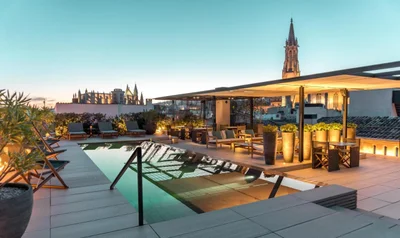 LUXURY
LUXURY Sant Francesc Hotel Singular
Advantages
- Celebrity hideaway
- Beautiful cloister
- Top service
Considerations
- Extremely expensive
- Can feel pretentious
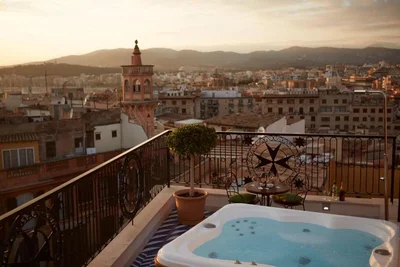 BOUTIQUE
BOUTIQUE Hotel Cort
Advantages
- Unbeatable location
- More affordable
- Stylish
Considerations
- Tiny rooms
- Street noise
Deià
The artist's village that sold its soul. Robert Graves made it famous, Instagram killed it. Stone houses cling to terraces above the sea, every second home belongs to a London banker.
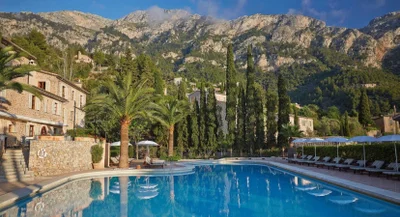 LUXURY
LUXURY Belmond La Residencia
Advantages
- Celebrity hideaway
- Tennis courts
- Two pools
Considerations
- Outrageously expensive
- Pretentious atmosphere
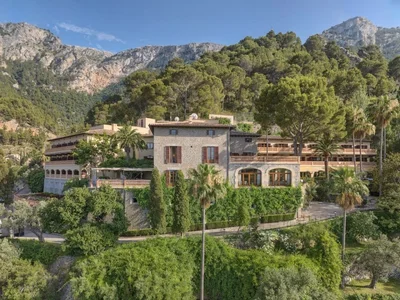 LUXURY
LUXURY Hotel Es Molí
Advantages
- Last 'reasonable' luxury
- Authentic feel
- Beautiful grounds
Considerations
- Still very expensive
- Books up early
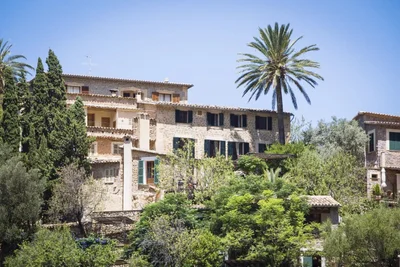 BUDGET
BUDGET Hostal Villa Verde
Advantages
- Actually affordable
- Central location
- Local feel
Considerations
- Very basic
- Booked solid May-Sept
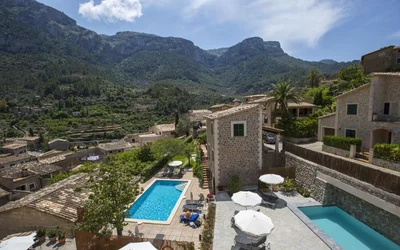 BOUTIQUE
BOUTIQUE S'Hotel d'Es Puig
Advantages
- Intimate size
- Stylish design
- Good location
Considerations
- Small pool
- Pricey for size
Deià: The Artists’ Tax Haven
Deià sits dramatically on the northwest coast, a honey-colored cascade of stone houses tumbling down terraced hillsides toward a rocky cove. This is where Robert Graves wrote his novels, where Richard Branson owns La Residencia, and where a simple coffee costs €5 – and nobody blinks. The village has become a refuge for the wealthy creative class, pricing out the very artists who made it famous.
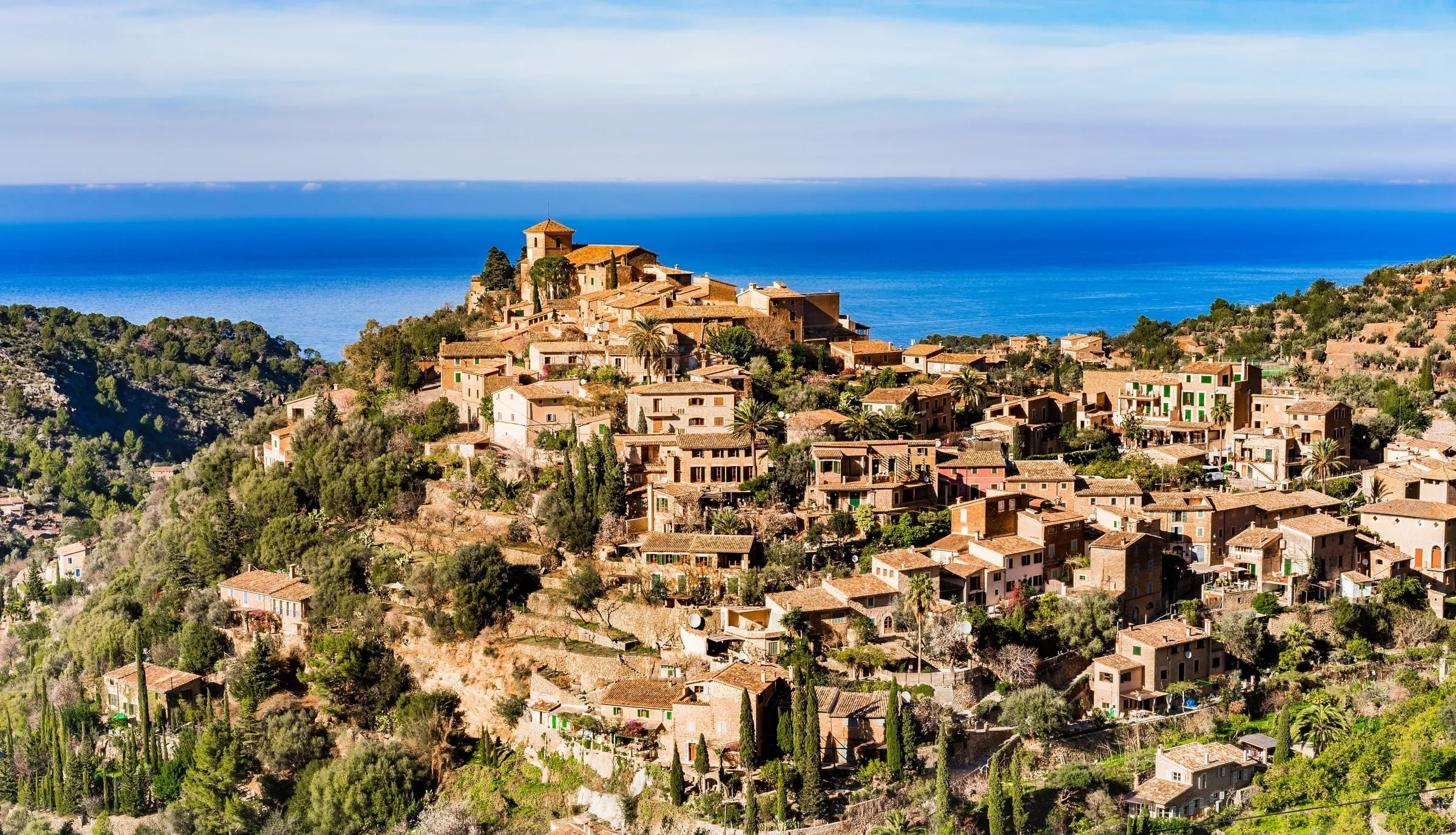
Port de Pollença
The Family Compromise • €165-250/night
Port de Pollença remains the rare Mallorcan resort where actual residents outnumber tourists, where the beach is still free (for now), and where fishermen mend nets at dawn while tourists sleep off their sangria. The pine-lined promenade hasn’t changed since the 1950s, and neither have the prices at the local bars.
Hotel Illa d’Or Paseo Colón 265, 07470 – 1929 heritage building facing the bay. Art Deco details, private beach platform, same family for three generations. €165/night
Hotel Hoposa Bahía Paseo Voramar s/n, 07470 – Beachfront, all rooms have sea views, breakfast on the terrace. Package tourists but good value. €140-220/night
Aparthotel Duva Carrer del Boquer 2, 07470 – Family apartments with kitchens, pool, 200m from beach. Weekly rates better. €180/night
Morning ritual: Coffee at Bar Cas Patró Moll Vell s/n – €1.40 cortado, fishermen mend nets at the next table, unchanged since 1952
Family tip: The shallow waters stretch 100m from shore. Jellyfish arrive in August. The €2 bus to Alcúdia runs every 30 minutes.
The GR221: Mallorca’s Greatest Hike (If You Can Book It)
The Dry Stone Route Reality
The GR221 stretches 150km from Port d’Andratx to Pollença through the Serra de Tramuntana. It’s spectacular. It’s also victim to its own success. The refugios (mountain huts) must be booked through conselldemallorca.cat, but the website crashes regularly and bookings open randomly.
GR221 Dry Stone Route
challenging- 150km through Serra de Tramuntana
- UNESCO World Heritage landscapes
- Ancient stone paths and terraces
- Mountain refugios with hot meals
GR221 Stage Costs
As of March 2025Stage Breakdown
Stage 1-2: Port d’Andratx to Estellencs (35km, 2 days)
- Start at 6am to beat day-hikers to La Trapa monastery ruins
- Water source at Ses Fontanelles (usually flowing March-June)
- Stay: Hostal Sa Plana, Estellencs (€75/night, includes breakfast)
Stage 3-4: Estellencs to Deià (28km, 2 days)
- The Archduke’s Path above Valldemossa: 900m elevation, built 1900s
- Pass by Sa Foradada: the famous pierced rock formation
- Refugi de Can Boi (Deià): €18/night but book 3 months ahead
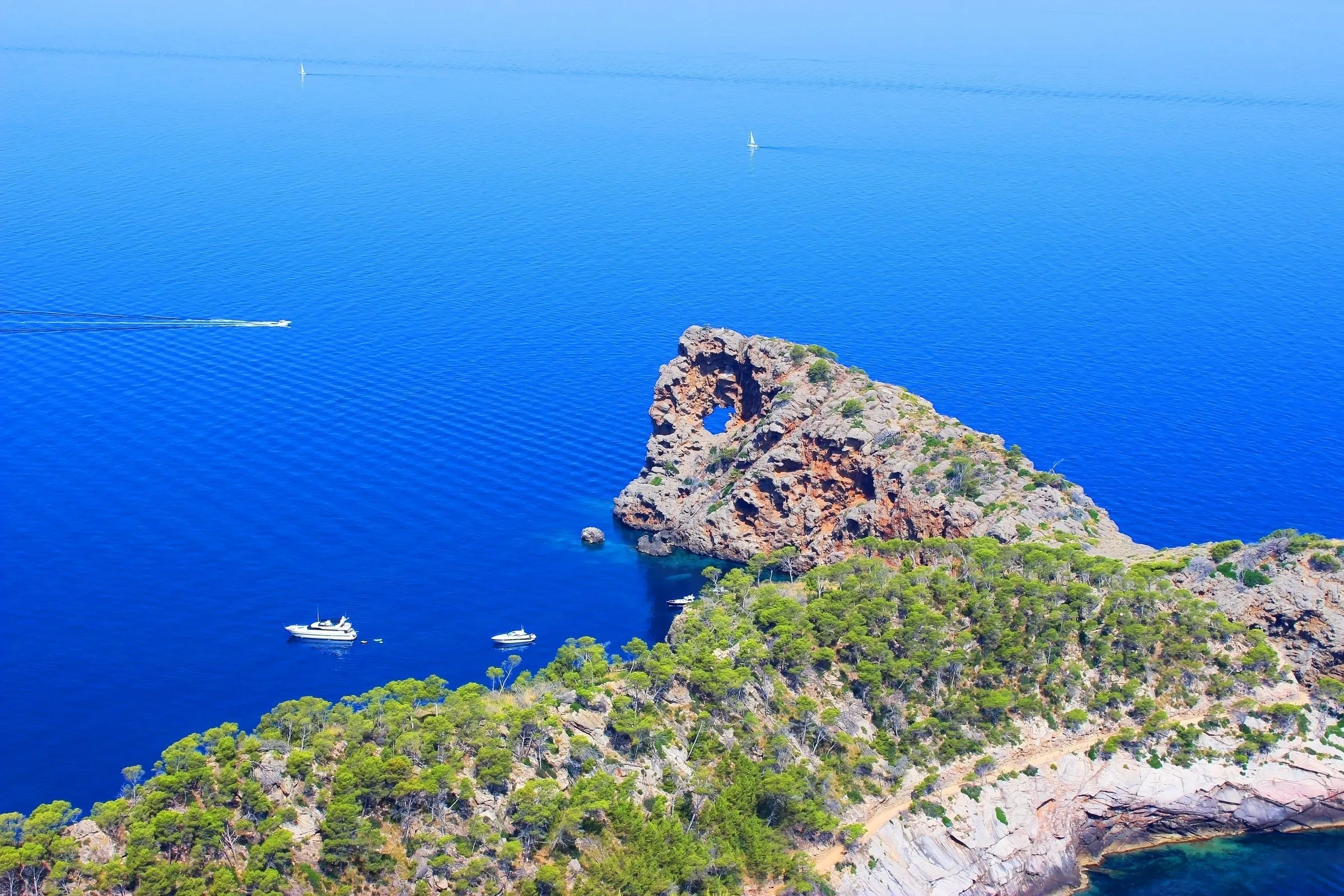
Sa Foradada (“the perforated”): A 18m hole through solid rock, carved by centuries of waves. The sunset views from here are worth the 45-minute hike down.
Stage 5-6: Deià to Cúber (25km, 2 days)
- Barranc de Biniaraix: 800m ascent on Moorish cobblestones
- Fill water at L’Ofre spring (marked by cairn at 850m elevation)
- Refugi de Tossals Verds: €22/night, they serve hot meals
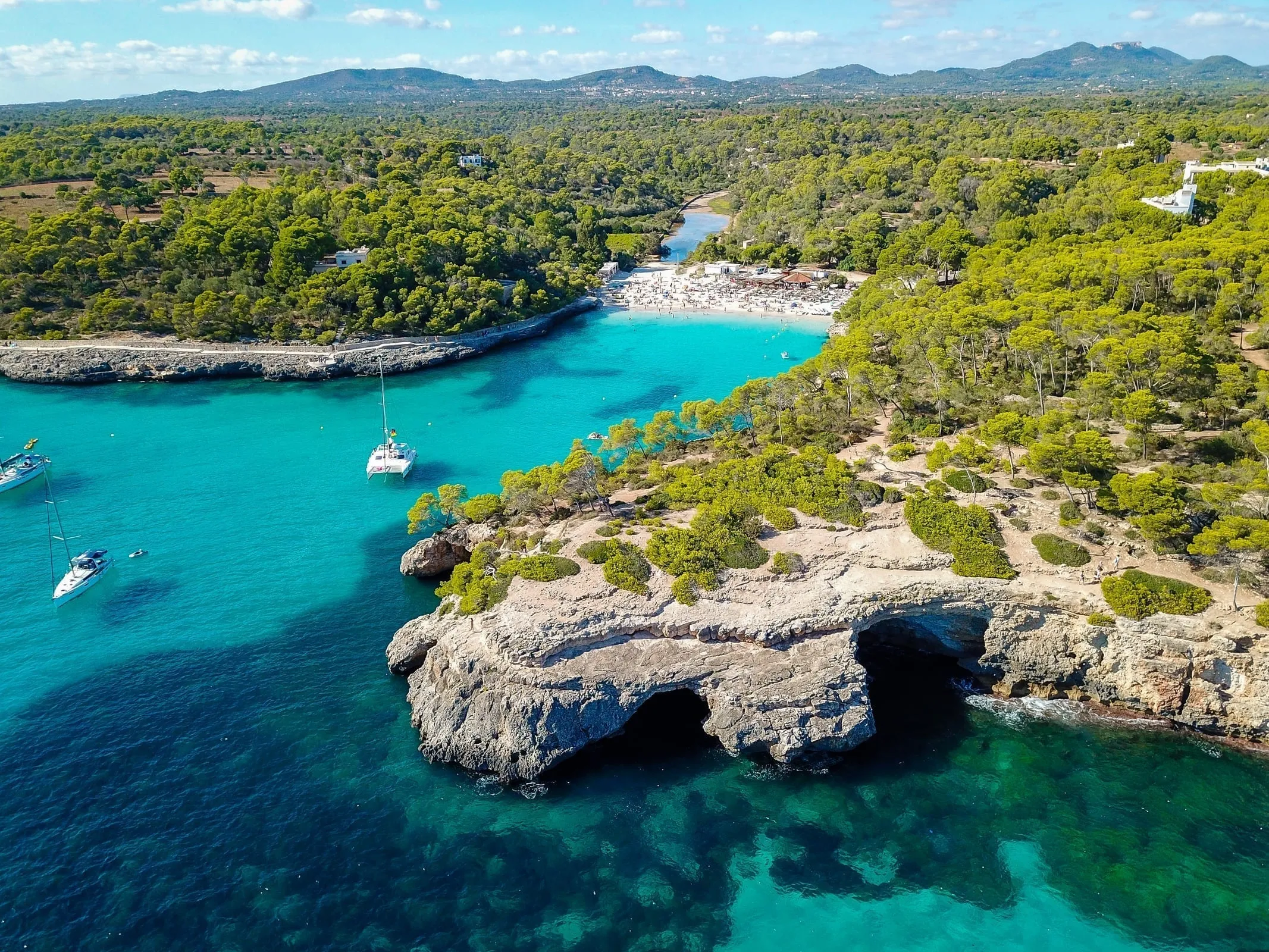
Cala Llombards at 3pm in August: 47 boats, 300 people, zero parking spaces. Come at 7am or don’t come at all.
The Beaches Nobody Talks About (Because We Want Them To Stay That Way)
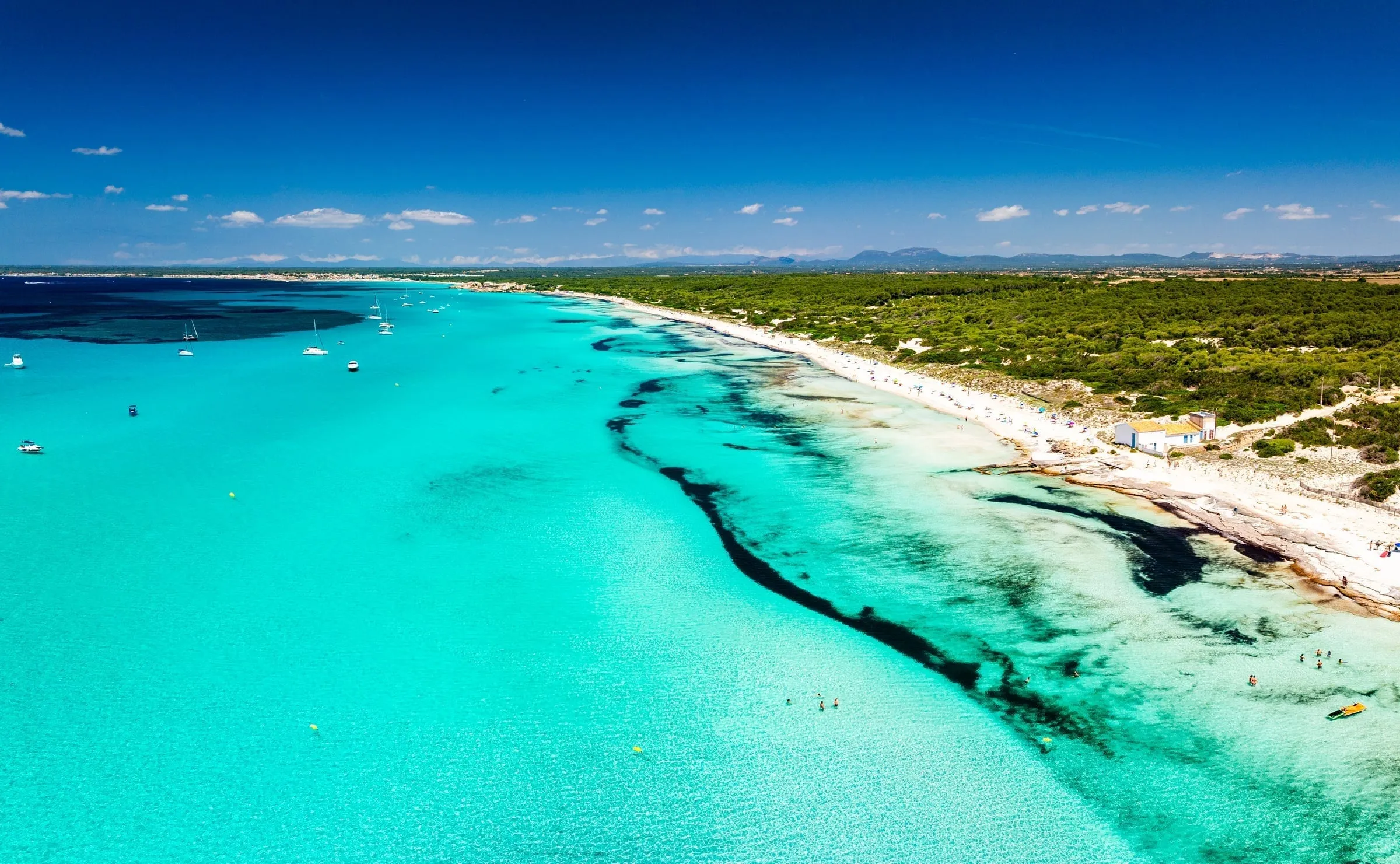
Es Trenc from above: 3km of Caribbean-blue water in Europe. Also 3,000 people on August afternoons. Choose your timing wisely.
Caló des Moro Is Dead to Us
Yes, it’s beautiful. It’s also limited to 200 people daily with advance booking (€10 through visitcalodesmoro.com). The Instagram crowd arrives at 10am. The erosion is heartbreaking. The wooden stairs collapsed in March 2024. Please, just don’t.
The Real Hidden Coves
Cala Varques
moderate accessFacilities
Important Notes
20-minute walk through private land (tolerated, not legal)
No facilities - bring water and snacks
Nudists use the southern section after 2pm
Boat tours arrive 10am-5pm
Es Caragol
hard accessFacilities
Important Notes
45-minute walk from Ses Salines lighthouse
Follow the coast path, not the road
Seagrass piles up June-August (protected, don't remove)
The walk is the point – if you want easy, go elsewhere
Mallorca with Kids
Mallorca is a paradise for families.
- Family-Friendly Beaches: The beaches at Alcúdia and Playa de Muro are perfect for children, with miles of soft sand and shallow, clear water. For more top spots, read our dedicated guide to The Best Beaches in Mallorca for Families.
- Activities for All Ages: Beyond the beach, kids will love the Palma Aquarium, the thrilling slides at Western Water Park, and the dolphin shows at Marineland.
- Tips for Parents: Many restaurants are child-friendly, offering kids’ menus and high chairs. The island is very safe, and you’ll find everything you need in the local towns and resorts.
Where Locals Actually Eat (And What It Costs)
The Death of Authentic Mallorcan Cuisine
In tourist zones, traditional restaurants are closing at one per week. They’re replaced by “Mediterranean fusion” serving frozen paella to Germans who don’t know better. But pockets of resistance remain.
Ca'n Joan de S'Aigo
Traditional Mallorcan CaféSignature dishes
Operating since 1700. The ice cream recipe hasn't changed in 300 years. Closes at 8:30pm sharp.
Es Verger
Mountain GrillSignature dishes
Only open weekends, October to May. No phone, no website – follow the hikers. They'll turn you away after 2pm.
Ca Na Toneta
Traditional MallorcanSignature dishes
Sisters María and Teresa cook their grandmother's recipes. Book via WhatsApp: +34 971 515 226
The Markets That Matter
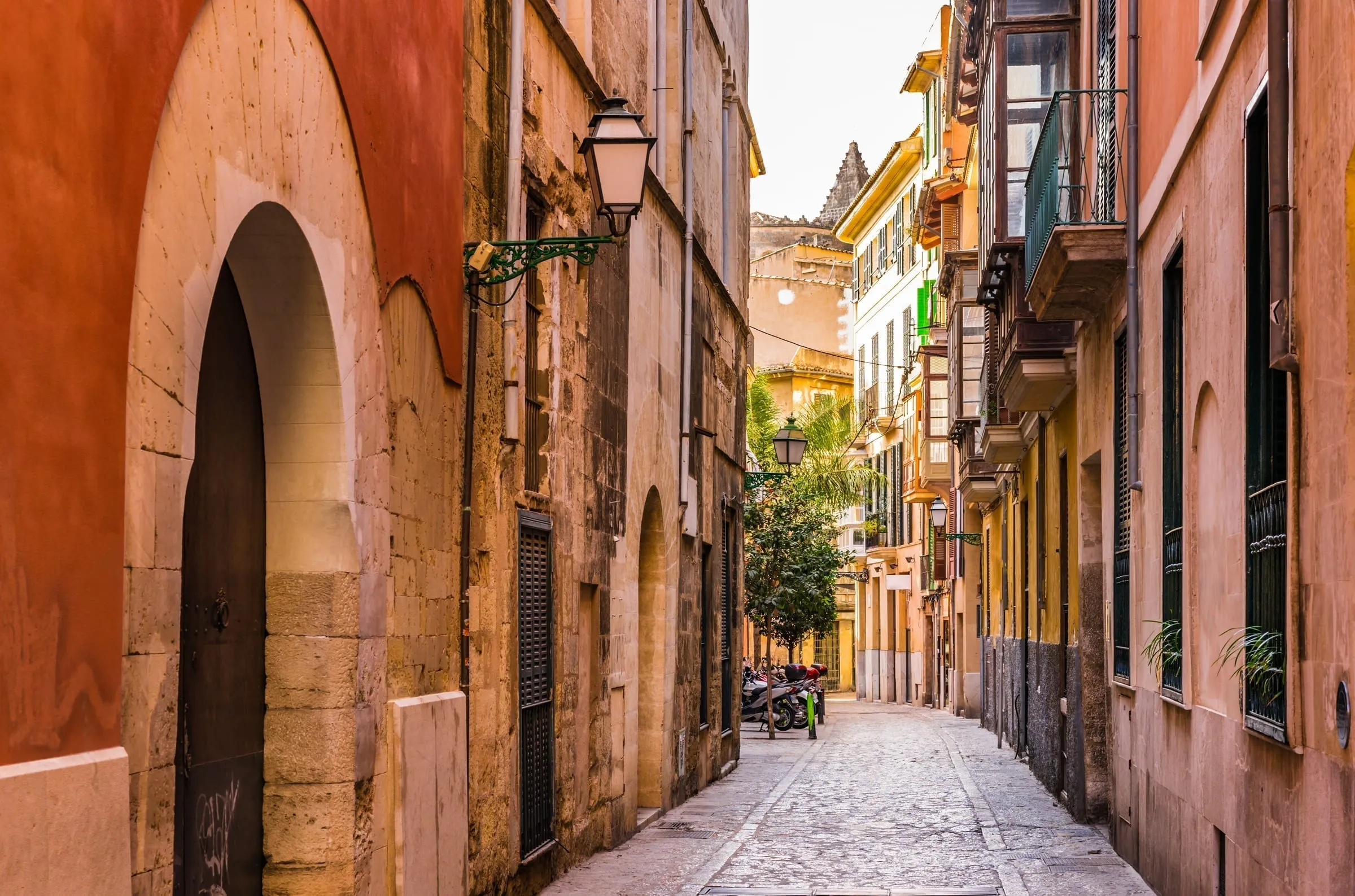
Palma’s old town at golden hour: These medieval streets hide century-old bakeries, €1.40 cortados, and the last authentic tapas bars.
Mercat de l'Olivar (Palma)
As of March 2025How Many Days Do You Need? (Itineraries)
Weekend Getaway (3-4 Days)
Focus on Palma for a couple of days, exploring the city’s history and food scene. Use your remaining day for a trip to a nearby beach like Illetes or a visit to the charming mountain village of Valldemossa.
One Week in Mallorca
This gives you enough time to see the highlights. Spend two days in Palma, then split the rest of your time between a base in the north (like Port de Pollensa) to explore the beaches and mountains, and a base in the southeast (like Santanyí) to discover the beautiful calas.
10+ Days in Mallorca
With 10 days or more, you can truly immerse yourself. Add a side trip to the tranquil island of Menorca, spend a few days hiking in the Serra de Tramuntana, or simply adopt a slower pace and live like a local.
The Uncomfortable Truth: Should You Even Come?
The Local Perspective
In March 2025, various resident groups published an open letter: “DO NOT COME. We do not need more tourists; you are the source of our problem.” It’s harsh. It’s also understandable. When 72% of Palma’s housing is tourist rentals, when traditional olive farms sell for €50 million to become hotels, when locals can’t afford to live where they were born – something has to give.
If You Do Come (And You Will)
The Climate Reality
Average temperatures are 2.3°C higher than the 1970s. The Torrent de Pareis flooded three times in 2024 (it used to be once per decade). Forest fire season now runs March to November. The posidonia seagrass that keeps beaches pristine is dying from anchor damage and warming water. This paradise is fragile.
The Questions That Matter in 2025
Essential Mallorca 2025 Questions
01 Should I even visit Mallorca given the protests?
That's for you to decide. The island needs tourism economically but is suffocating socially and environmentally. If you come, be conscious of your impact. Stay longer, travel slower, spend locally.
02 Is Mallorca still affordable?
No. A beer costs €5-8. A beachfront dinner for two: €100 minimum. Parking in Palma: €3/hour. That 'cheap' package holiday doesn't exist anymore unless you're willing to stay in the concrete jungles of Magaluf or S'Arenal.
03 Will I be welcome as a tourist?
Honestly? It depends. In Palma's old town or Deià, you're a walking wallet. In Magaluf, you're part of the problem. But show up at a village festa, attempt some Catalan, buy from local shops – you might just make a friend.
04 When is it actually not crowded?
Truly empty: February weekdays, November after the 15th. Acceptable: May before the 15th, October after the 15th. Forget it: July, August, Easter week, any UK school holiday.
05 What's this about beach reservations?
Pilot program started July 2024. Caló des Moro, parts of Playa de Palma require booking via app. €10-15 per person. Locals exempt (with NIE number). More beaches adding restrictions monthly.
06 Is the water really running out?
Two reservoirs (Gorg Blau and Cúber) supply Palma. In August 2024, they hit 35% capacity. Desalination plants run overtime. Your hotel's 'save water' signs aren't just virtue signaling anymore.
07 How much should I budget per day?
Budget travelers: €80-100/day (hostel, self-catering, buses). Mid-range: €150-250/day (3-star hotel, restaurants, rental car). Luxury: €400+/day (boutique hotels, fine dining, private experiences).
08 Do I need to speak Spanish or Catalan?
You'll survive with English in tourist areas, but learning 'Bon dia' (good morning), 'Gràcies' (thank you), and 'Perdó' (sorry) in Catalan will earn you respect. Spanish works everywhere.
09 What's the deal with the tourist tax?
€4 per night in high season (May-October) for 4-5 star hotels, €2-3 for lower categories. Supposedly funds environmental projects. Kids under 16 exempt. Paid at accommodation.
10 Can I drink the tap water?
Yes, it's safe but tastes terrible due to high calcium content. Most locals and restaurants use filtered or bottled water. Hotels usually provide complimentary bottles.
The Last Word: A Love Letter to a Drowning Island
After 15 years watching Mallorca transform, I should tell you not to come. The island is full. The infrastructure is breaking. The locals are angry. The environment is suffering.
But I can’t.
Because at 6:47am, when the first light hits the Serra de Tramuntana and turns the limestone pink, when the only sound is the bells of sheep moving through olive groves that have stood for 800 years, when you swim in water so clear you cast a shadow on sand 10 meters below – Mallorca is still magic.
Come if you must. But come with respect. Come with awareness. Come understanding that this isn’t your playground; it’s someone’s home. Learn the word perdó (sorry). Use it when you’re in the way. Say bon dia to everyone. Eat pa amb oli (bread with tomato and oil) for breakfast instead of a full English. Take the bus sometimes. Walk more. Post less.
And maybe, just maybe, if enough visitors start acting like guests instead of conquerors, this magnificent island might survive us.
Maria Ferrer has lived between Palma and Sóller for 15 years, documenting the island’s transformation through photography and writing. She speaks Catalan, Spanish, and English, and still can’t decide if tourism saved or destroyed her adopted home.
Explore More of Mallorca
Sources & References
- Institut d’Estadística de les Illes Balears (IBESTAT), 2024 Tourism Data
- Consell de Mallorca, GR221 Trail Management Reports 2025
- Local interviews conducted February-March 2025
- Majorca Daily Bulletin, “Open Letter: Please Do Not Come” (March 17, 2025)
- Personal observations and pricing verified March 2025
